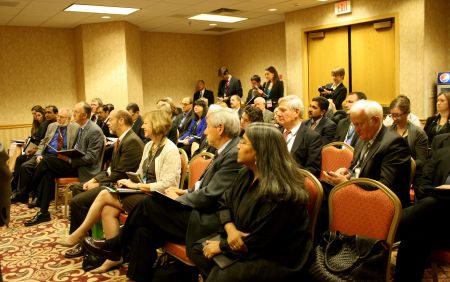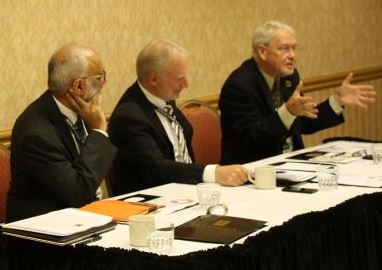Innovations through Partnerships: How We’ll Feed More with Less
by Steve Sonka
You likely wouldn’t meet Randall Hogan, the CEO of Pentair, at the Borlaug Dialogue where scientists, researchers, and practitioners gather to discuss today’s most pressing challenge—how to feed more with fewer resources. Yet this morning, I found myself forwarding an interview about Hogan’s new corporate strategy to my colleagues and co-hosts of a side event we held at the Des Moines symposium last week. The subject line of my email: we aren’t the only ones.
The quote I highlighted was part of Hogan’s explanation as to why his company fundamentally changed its strategic direction. “The opportunity was there in what we call the ‘new-new world’ of four billion middle-class people demanding energy, water, and food”. This struck me as important. Hogan’s accurate assessment of the demands of a changing global demographic was precisely the same focus as our side event. Given the realities of our ‘new-new world’, both Hogan as a business leader and those of us involved in agricultural development have to pay attention to this challenge.

Audience members engaged with expert panel on issues of food, water, and energy security. © ADM Institute
Our cross-sector partnership with the Institute of Food Technologists (IFT) is our way of paying attention. As part of the Power of 3 initiative, our organizations co-hosted a panel discussion featuring three guest experts who gave unique perspectives on how to use science and innovation to curb losses while increasing food, water, and energy security. Between expertise on policy from Indian government official Ashok Gulati, academic research from current university administrator Mark McLellan, and industry innovations from former food company executive John Ruff, the thoughts they presented were dynamic.
And, undeniably, there was an overarching theme. Partnerships, particularly public-private partnerships, are essential. To questions from the audience on where and how to implement solutions, the panel unanimously responded there is no silver bullet. The way forward, Ruff notably put it, is to “build coalitions with stakeholders with whom our organizations can make the most impact”.

Panelists gave important insights on the role of science and innovation in curbing postharvest losses. © ADM Institute
If Ruff’s closing advice is our theoretical guide to approaching this problem, Hogan’s interview is the practical example. No matter which type of stakeholder – a CEO, a university researcher, a bureaucrat– we all have to address this challenge if we are to prosper in the future. The nature and impact of the outcomes of these efforts will greatly depend on our ability to build and leverage meaningful partnerships. We are excited to continue our exploration with IFT on the Power of 3, and invite you to engage with us on this important initiative as well.


Add Comment